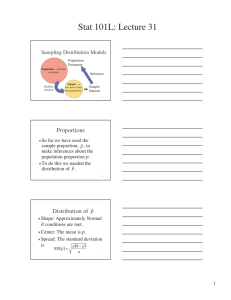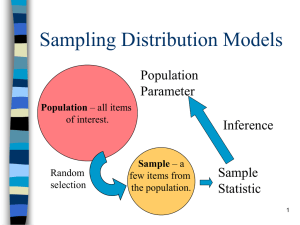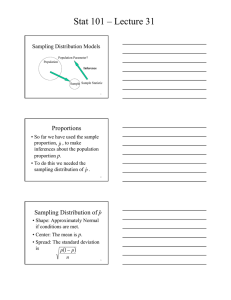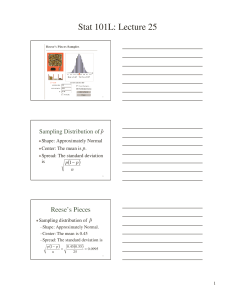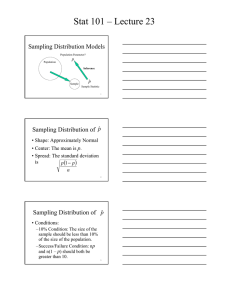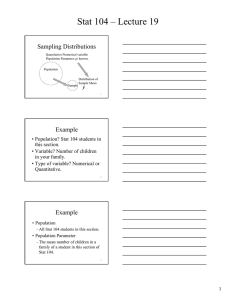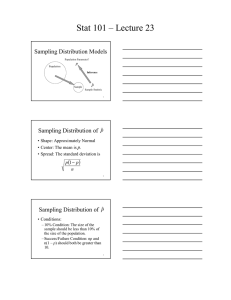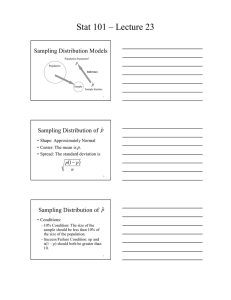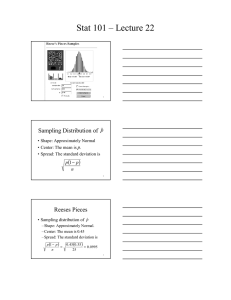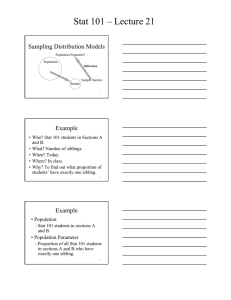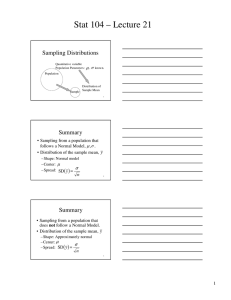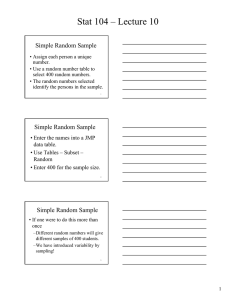Stat 101 – Lecture 28 Sampling Distribution Models Proportions
advertisement
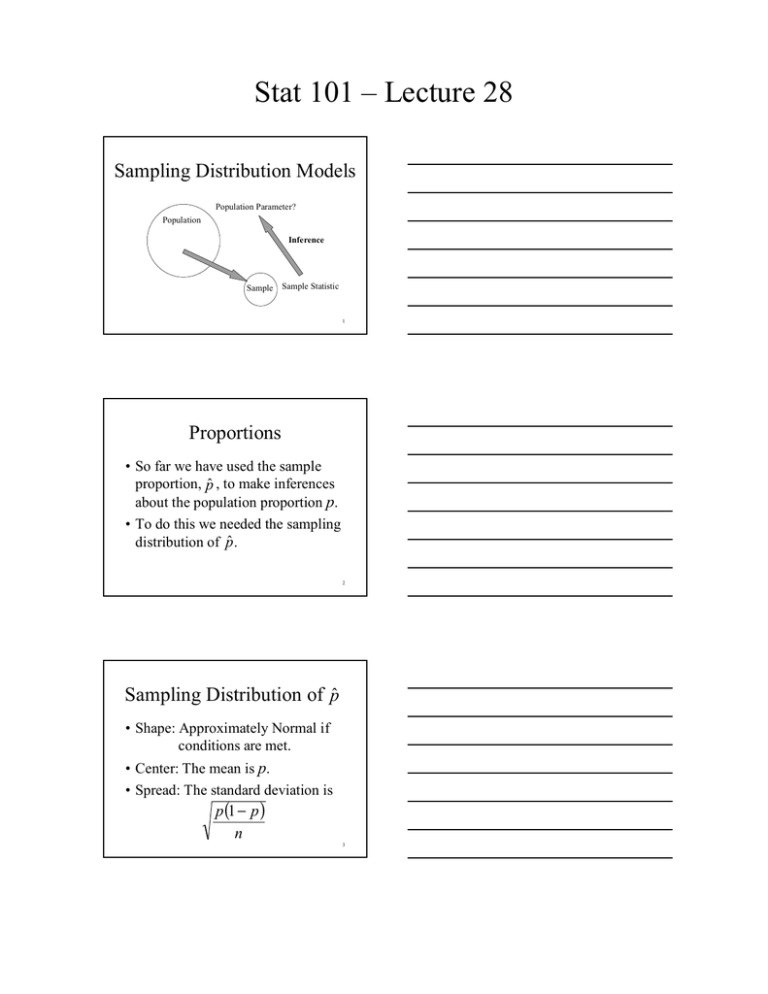
Stat 101 – Lecture 28 Sampling Distribution Models Population Parameter? Population Inference Sample Sample Statistic 1 Proportions • So far we have used the sample proportion, p̂ , to make inferences about the population proportion p. • To do this we needed the sampling distribution of p̂. 2 Sampling Distribution of p̂ • Shape: Approximately Normal if conditions are met. • Center: The mean is p. • Spread: The standard deviation is p (1 − p ) n 3 Stat 101 – Lecture 28 Categorical Variable • When the response variable of interest is categorical, the parameter is the proportion of the population that falls in a particular category, p. 4 Quantitative Variable • When the response variable of interest is quantitative, the parameter is the mean of the population, µ . 5 Means • We will use the sample, y , to make inferences about the population mean, µ . • To do this we needed the sampling distribution of y . 6 Stat 101 – Lecture 28 Simulation www.ruf.rice.edu/~lane/stat_sim/ sampling_dist/index.html 7 Simulation • Simple random sample of size n=5. • Repeat many times. • Record the sample mean, y , to simulate the sampling distribution of y . 8 Simulation • Different samples will produce different sample means. • There is variation in the sample means. • Can we model this variation? 9 Stat 101 – Lecture 28 10 Population • Shape: Basically normal • Center: Mean, µ = 16 • Spread: Standard Deviation, σ = 5 11 Sampling Distribution of y • • • • n=5 Shape: Normal Center: Mean, µ = 16 Spread: Standard Deviation, SD( y ) = σ n = 5 = 2.24 5 12
